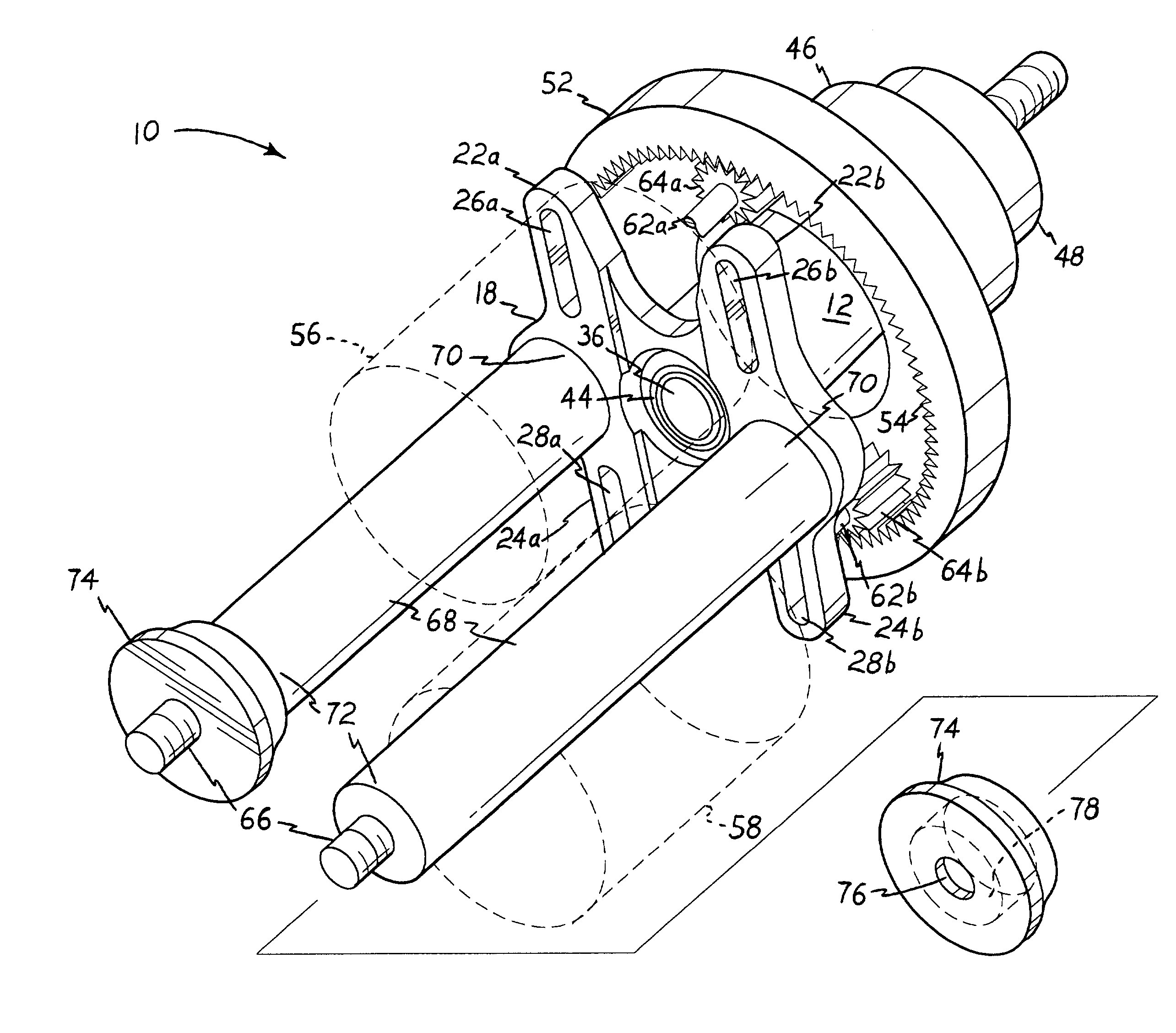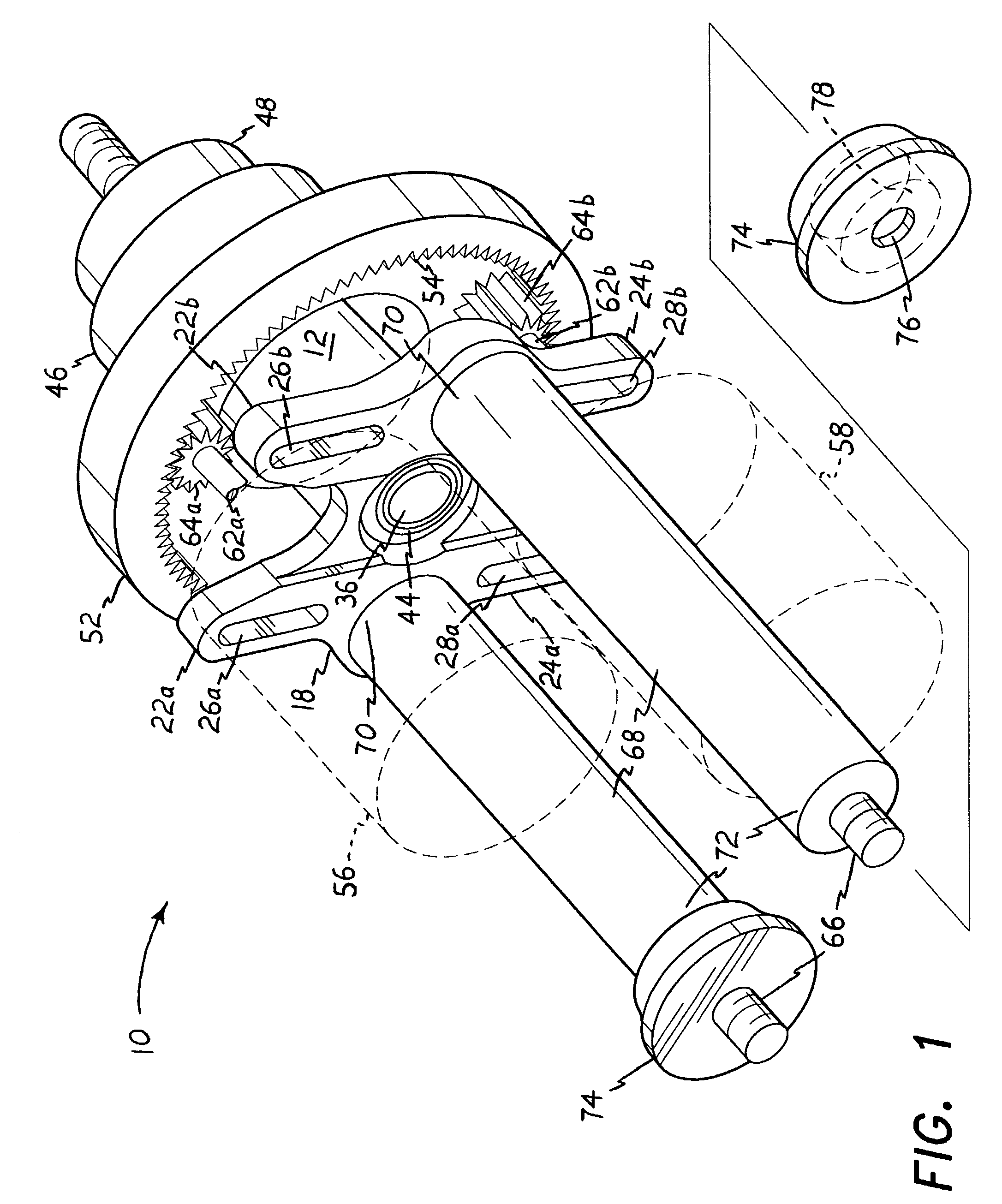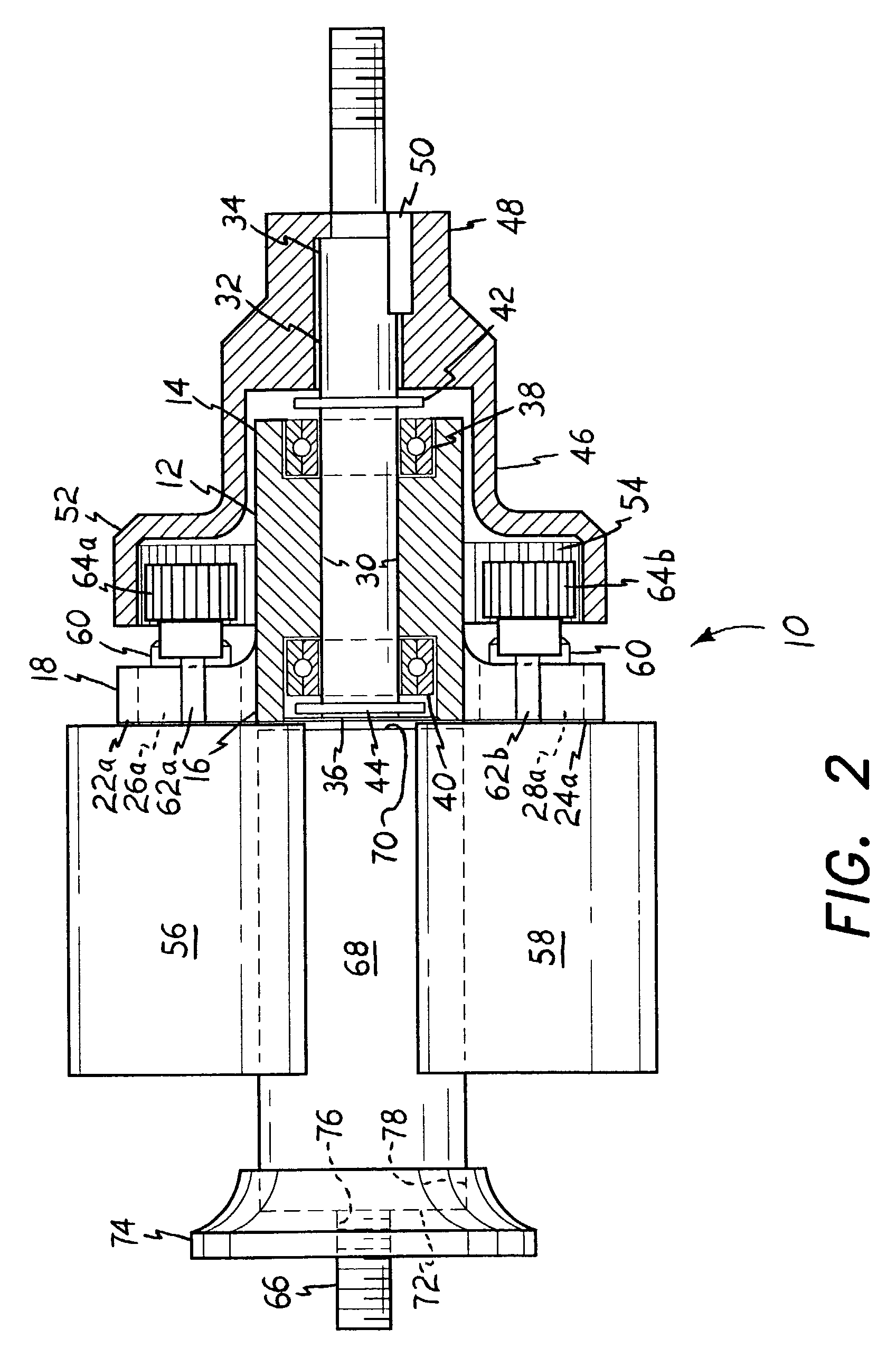Internal spur gear drive
a technology of spur gear drive and internal spur gear, which is applied in the field of mechanical systems, can solve the problems of reducing the power output of the engine, reducing the efficiency of the propeller, and the operation of the typical aircraft reciprocating engine at relatively low (and inefficient) rpm
- Summary
- Abstract
- Description
- Claims
- Application Information
AI Technical Summary
Benefits of technology
Problems solved by technology
Method used
Image
Examples
Embodiment Construction
[0037]The present invention is an internal spur gear drive, including a mounting base which may be configured for adjustable attachment of multiple motors thereto. The motors each have a drive shaft with an externally toothed pinion spur gear extending therefrom, which engage the internal teeth of a drive bell which surrounds and protects the pinion gears. The drive bell is secured to a drive shaft which provides power output from the mechanism.
[0038]FIGS. 1 and 2 of the drawings respectively provide a perspective view and a side elevation view in section of the present spur gear drive 10. The heart of the present drive system 10 comprises a drive shaft housing 12 having a distal first end 14 and an opposite second end 16 which is integrally attached to a mounting base 18. The mounting base 18 is a generally planar structure, oriented substantially normal to the axis of the drive shaft housing 12. The mounting base 18 provides for the attachment of the assembly to another structure ...
PUM
 Login to View More
Login to View More Abstract
Description
Claims
Application Information
 Login to View More
Login to View More - R&D
- Intellectual Property
- Life Sciences
- Materials
- Tech Scout
- Unparalleled Data Quality
- Higher Quality Content
- 60% Fewer Hallucinations
Browse by: Latest US Patents, China's latest patents, Technical Efficacy Thesaurus, Application Domain, Technology Topic, Popular Technical Reports.
© 2025 PatSnap. All rights reserved.Legal|Privacy policy|Modern Slavery Act Transparency Statement|Sitemap|About US| Contact US: help@patsnap.com



